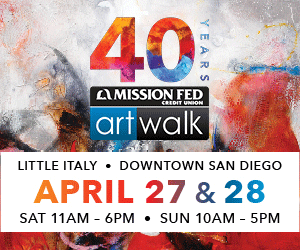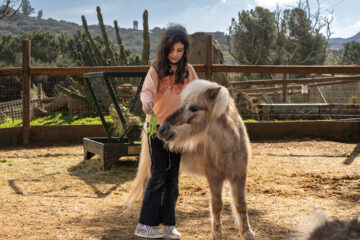Life After The Finish Line

There’s nothing quite like a day at the racetrack. Sitting in the grandstands, we watch as the horses wait restlessly for the announcer: “And they’re off!” We cheer as they charge out of the gates, nostrils flaring and hooves kicking up dust. We jump up and down as “our horse” takes the lead. Maybe our ticket will be the winner.
For all the excitement they give us, we probably don’t much think about what happens to these mighty equestrian athletes when they’re no longer fit to race.
“Too many end up in bad situations,” says Dawn Mellen, president and founder of After the Finish Line. Her nonprofit — which hosts its Majesty Fundraiser gala on August 1 at the Hilton in Del Mar — helps fund organizations that give retired thoroughbreds a better future.
“They are so capable, so talented, and so willing,” says Mellen, who lives part-time in Rancho Santa Fe. “They want to please us. We are obligated to look out for their welfare.”
Most racehorses retire around age 7 or 8, though one bad step on the track can derail a career much earlier. The average horse lifespan is 25 to 30 years, however, and some owners don’t want to deal with the expenses of an animal that can no longer do its job. Even champions who have netted fortunes end up in the slaughterhouse.
“I think it’s because there’s always another horse to take their place,” says Mellen with a sigh. “But is that the kind of people we want to be? Or do we want to be more caring and concerned?”
Mellen points out that rescued horses can be rehabilitated and retrained to do jumping, dressage, polo, or trail riding. Some are a good match for therapeutic riding programs. Even horses whose injuries prevent riding make loving companion animals. “Just like humans, they can have a second career,” she adds.
But horses, as any owner knows, are expensive, especially ones with extensive medical needs. After the Finish Line provides money for rescues, vet costs, dental, transportation, and much more.
Mellen believes that the racing industry is stepping up to help the horses, but she wishes it was at a faster pace. In the meantime, she’s hoping that the public will continue to hear about the horses’ plight.
“It’s like greyhound racing,” she says. “When people found out that dogs were shot when they were no longer able to race, they were outraged. They adopted the dogs.”
“Everyone should remember how many people are employed because of these racehorses,” says Mellen. “If there were no horses on the track, there wouldn’t be a single person in the stands.” (www.afterthefinishline.org) ANNAMARIA STEPHENS






Comments